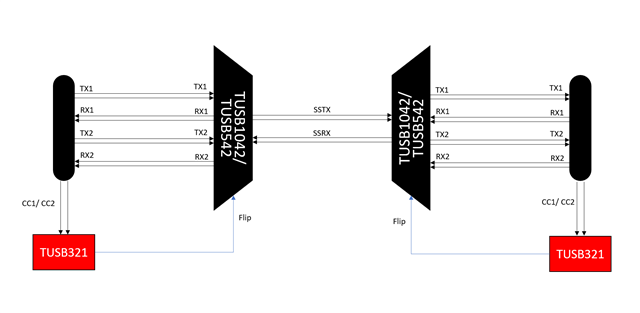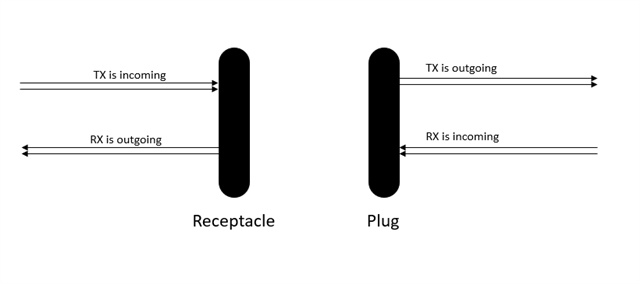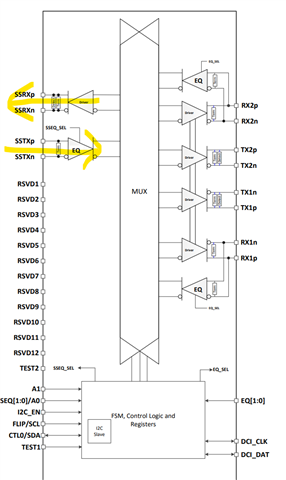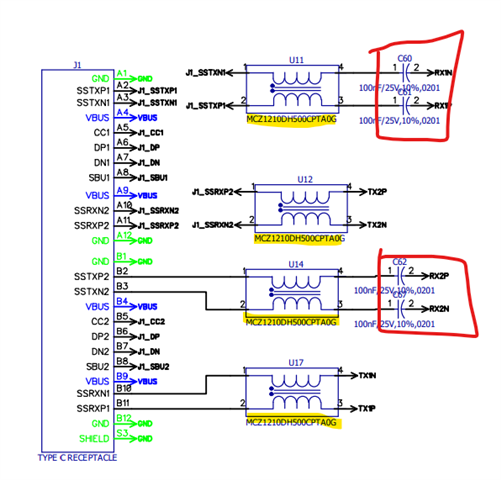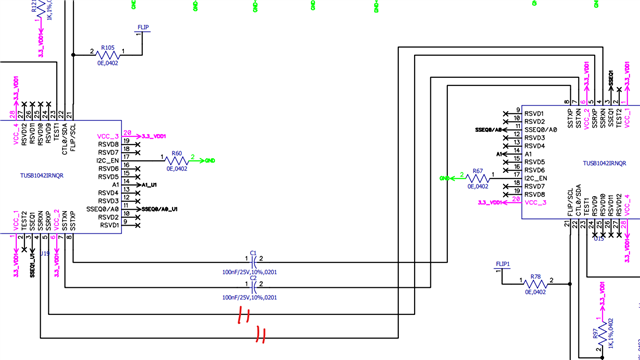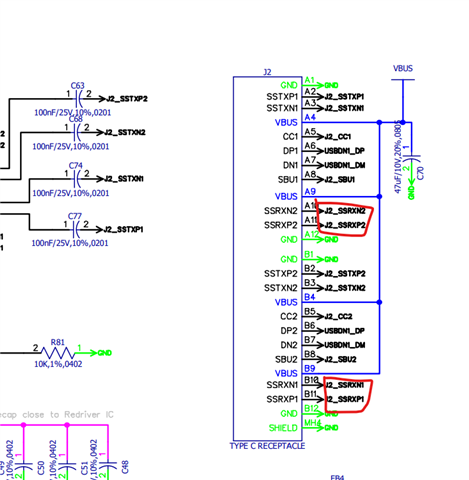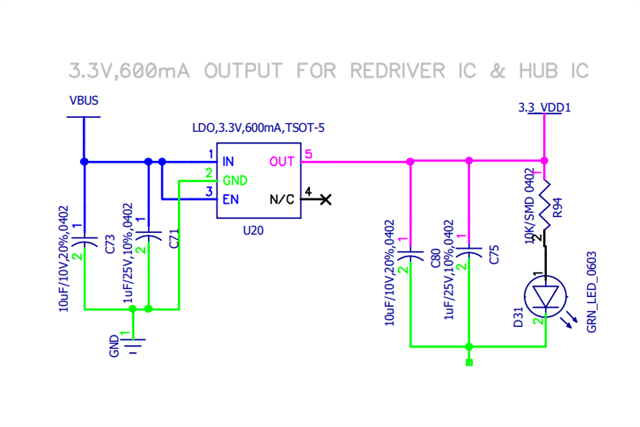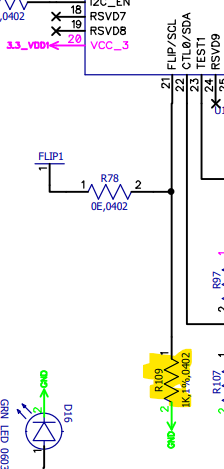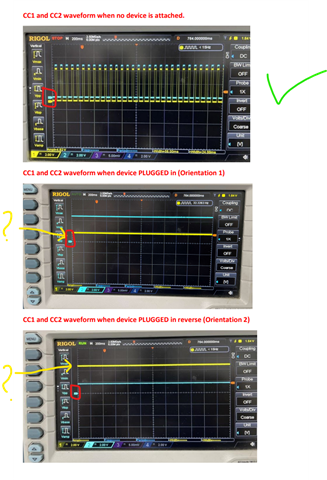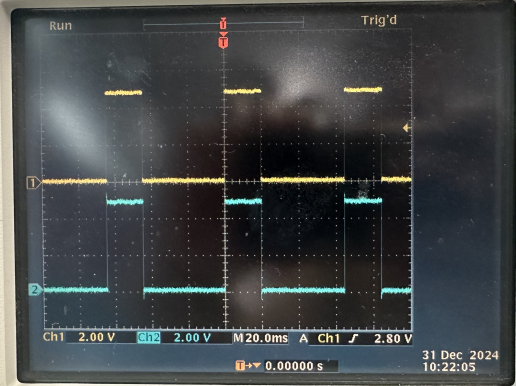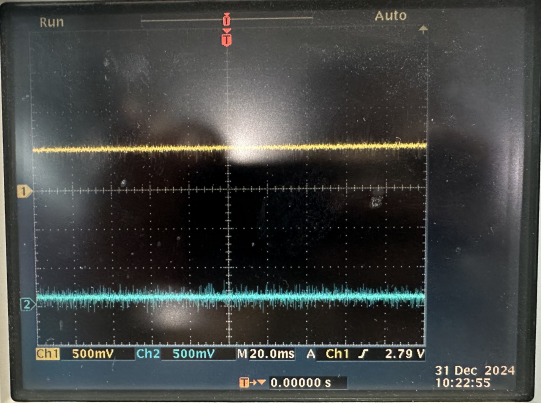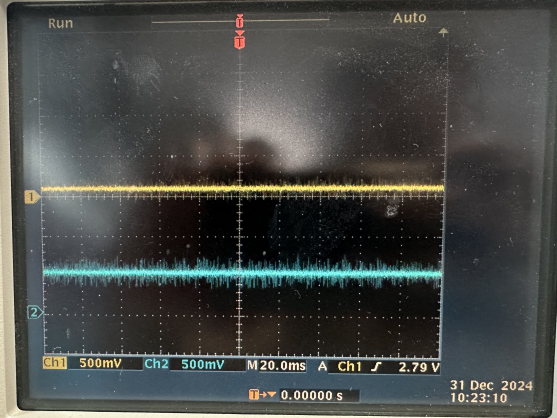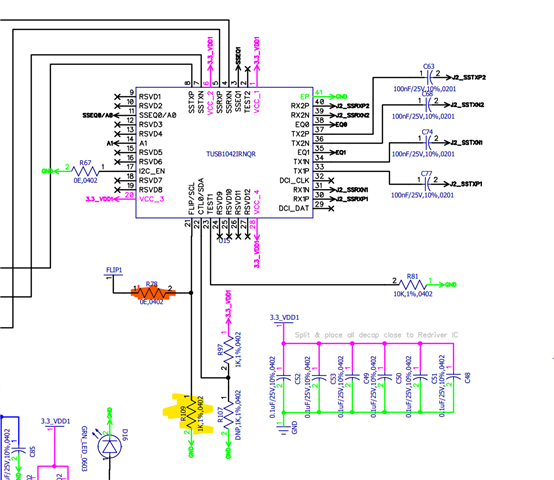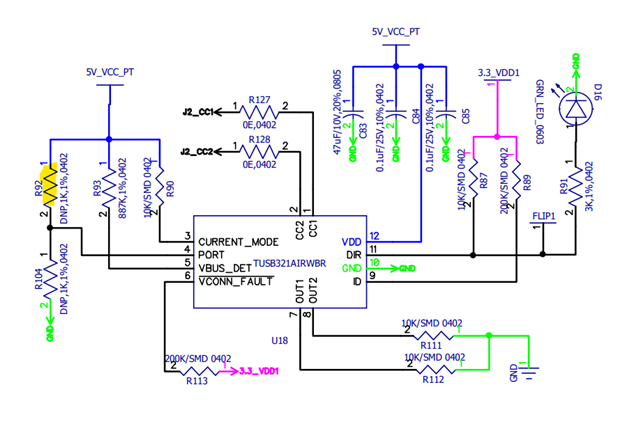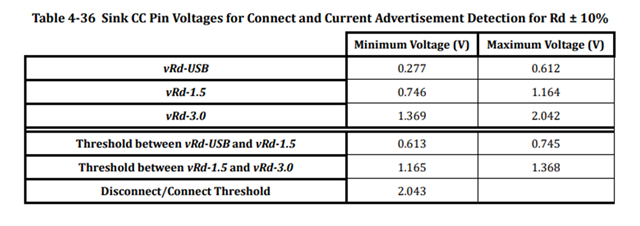Other Parts Discussed in Thread: TUSB321, TUSB1044, TUSB1042I, TUSB321AI
Tool/software:
We are testing a custom PCB with TUSB1104 re-driver. We have receptacle on both side of the TUSB1104. Below are the configurations
1) CC1 & CC2 of input side (for host) receptacle is pulled low. CC1 & CC2 of output side (device) receptacle is controlled through TUSB321. TUSB321 is configured as DFP.
2) FLIP pin - TUSB321 is controlling FLIP PIN. Also tried manual switch for FLIP between 3.3V and ground.
3) Configured as PIN strap mode (not in I2C mode) .
Board is working in one particular orientation of cable. But if we reverse plug in cable on either side of the board, it stops working but if we reverse the second side cable as well then it will work. Suggest possible causes.


